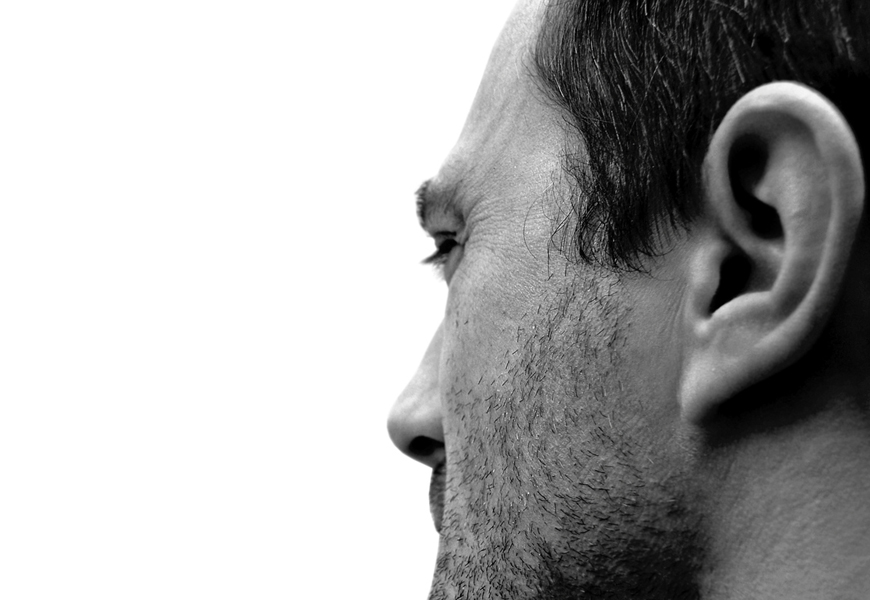On April 15, 1912, the Royal Mail Steamer (RMS) Titanic, a British passenger liner built in Belfast and operated by the White Star Line, sank in the North Atlantic Ocean after striking an iceberg during her maiden voyage from Southampton, England, to New York City, United States. Of the estimated 2,224 passengers and crew aboard, more than 1,500 people died, making it one of the worst maritime disasters in history.
The sinking of the Titanic has captivated people for over 110 years. The ship was believed to be unsinkable at the time and the stories of survivors, the various explanations as to why it sank, the decades-long search to find the wreck, and, of course, James Cameron’s multi-billion-dollar film Titanic in 1997 have all contributed to its enduring place in pop culture.
On June 19, 2023 the US Coast Guard based in Boston told the BBC that a submersible with five people aboard went missing two hours into their journey to the deep. As of that date, OceanGate’s Titan tourist sub had between 70 to 96 hours of oxygen left. A search for the craft is still underway. [UPDATE] On Thursday June 22, a remotely operated vehicle (ROV) involved in the search for the missing submersible that was exploring the wreckage of the Titanic discovered found the tail cone of the Titan on the sea floor about 1,600 feet away from the bow of the Titanic and other debris nearby, according to Rear Adm. John Mauger, the First Coast Guard District commander. The debris was “consistent with catastrophic loss of the pressure chamber,” according to the Coast Guard. The debris was analyzed by experts, and the families of the passengers were notified. Shortly after OceanGate Expeditions said it believes the five passengers on board the missing Titanic-bound submersible have died.
Read on to learn more about the Titanic, including how it was found, what it was like on board, and what secrets we’ve learned from the wreckage.

The Titanic was just under 900 feet long
The ship measured 882 feet and 9 inches in length, making it the biggest vessel of its time. Today, the largest cruise ship is Royal Caribbean’s Symphony of the Seas, clocking in at nearly 1,200 feet long.
The ship cost over $7 million to construct and took over two years to build
The giant vessel cost $7.5 million to build in the early 20th century, which would be equivalent to $183.4 million today. The ship took 26 months to build. Construction crews used 3 million rivets to build the 26,000-ton hull, a combination of iron and steel.
The Titanic set sail on May 31, 1911
Some 100,000 people attended the ship’s launch the first time the immense White Star liner made its way into the water was on May 31, 1911, in Belfast. It’s estimated that 100,000 people, or roughly one-third of the population in Belfast watched the just-over-a-minute-long launch.
The Titanic had two sister ships
The Olympic launched 20 October 1910, arrived at Jarrow for scrapping 13 October 1935. The Britannic launched 26 February 1914, sunk by mine 21 November 1916.
The Titanic had a swimming pool on board
The accommodation on Titanic was luxurious and spacious. In first class there were many new attractions such as squash courts, a Turkish bath, a gymnasium, a barber shop and also the first swimming pool on board a ship. Even the cheaper third class cabins were of a better standard than those on other liners. Nevertheless, there were more luxurious and spectacular liners in operation at the time.

Food on the Titanic
There were 40,000 fresh eggs aboard the ship. In other words, there were roughly 3,333 dozens of eggs on the Titanic. There were 20,000 bottles of beer and 1,500 bottles of wine stocked on the ship. In addition to plentiful alcohol, there were 8,000 cigars onboard, all of which was available for first-class patrons. Also, 14,000 gallons of drinking water were consumed each day on the ship. (For perspective, one gallon of water is equivalent to 16 cups)
The ship carried 2,223 passengers and crew
Of the 2,223 people aboard the Titanic, 1,517 did not survive the collision with the iceberg. The ship was not even at full capacity — it could hold more than 3,500 people. There were 735 first class guests, 674 second class guests, 1026 third class guests and 885 crew members.
Less than a third of all people aboard the ship survived
Only 705 of the 2,223 passengers and crew members made it back home. Some 61% of the passengers who survived were first-class guests. Less than 25% of third-class passengers survived.

The Titanic lies 12,600 feet underwater
The ruins of the Titanic lie nearly 2.5 miles beneath the surface of the ocean, approximately 370 miles off the coast of Newfoundland, Canada. The ship broke in two, and the gap between the bow and the stern is about 2,000 feet in the sea bed.
The iceberg was first spotted at 11:30pm on April 14
A lookout spotted the iceberg and frantically rang the warning bell. The ship was hastily turned at a sharp angle to avoid hitting it, but it was too late. Not even a full minute passed between the iceberg sighting and the collision. Only 37 seconds are said to have elapsed from the time the iceberg was sighted until the Titanic collided with the iceberg.
The iceberg that hit the ship may have jutted out 100 feet above water
The iceberg that the Titanic collided with is speculated to have been anywhere from 50 to 100 feet above water. The entire iceberg is believed to have been between 200 and 400 feet long.
The iceberg made a 300-foot gash in the hull of the boat
Titanic Captain Edward Smith believed the ship had grazed over the top of the iceberg, but he was in for a rude awakening when the crew assessed the site of the strike: five compartments had already flooded with water, and the bow was already beginning to submerge.
There were only 20 lifeboats
The Titanic had 20 lifeboats of three different types: 14 clinker-built wooden lifeboats, 2 wooden cutters intended to be used as emergency boats, and 4 “collapsible” Engelhardt lifeboats. The davits were capable of handling 64 life boats. That night many lifeboats only carried half of their maximum capacity…Over half the people on board could have survived if all of the space available on the lifeboats was used.
The first lifeboat was released an hour after the iceberg struck
It may seem like common sense for a ship to immediately release safety lifeboats upon hull breach. The Titanic, however, did not release its first lifeboat until an entire hour elapsed. Only 28 people boarded the first lifeboat, but it had the space to carry 65 people.
There was supposed to be a lifeboat drill
A lifeboat drill that was scheduled the day of the crash was cancelled for reasons that remain a mystery today. The decision to cancel the drill was made by Captain Edward Smith.
The temperature of the sea water was below freezing when the ship sank
According to measurements taken by Captain Stanley Lord of the SS Californian — a ship that was near the Titanic when it sank — water temperatures were as cold as 28 degrees Fahrenheit. The human body can survive up to 45 minutes in freezing water, according to the Life Jacket Association.
The chief baker treaded water for two hours before being rescued
The chief baker, Charles Joughin, supposedly treaded water for two hours before he was found. He claimed the copious amounts of whiskey he had consumed before the ship sank had kept his body warm enough to sustain the subfreezing water.
Musicians played for more than two hours as the ship went down
It’s unclear which songs were played as the ship went down, but one can only imagine how somber the atmosphere must have been. In the movie “Titanic,” one of the songs played was “Nearer, My God, to Thee,” which is believed to be the last song played on the ship in real life.
John Jacob Astor IV was the wealthiest man aboard
The heir of the Astor family fortune was by far the richest individual on the ship, worth an estimated $85 million at the time, or about $2 billion today. He perished along with the ship.
The youngest passenger on the Titanic was 2 months old
Millvina Dean was the youngest passenger aboard the ship and the longest living survivor. She died at the age of 97 in 2009.
Two young brothers survived the ship without a guardian
Edmond and Michel Navratil went down in history as the only children to survive the Titanic without a parent. They were two years apart in age and were nicknamed the “Titanic Orphans.” Their father, Michel Sr., kidnapped them from their mother, whom he was no longer with, and planned to take them to America. The last anyone saw of him was when he put his children in a lifeboat.
Ida Straus refused to get in the lifeboat without her husband, Isidor
Macy’s Department Store owners from New York, Ida and Isidor Straus, share perhaps one of the most heart-wrenching love stories of the Titanic. Ida refused to board the lifeboat without her husband, who turned down a spot offered to him knowing that women and children were still aboard. They perished together.

The Titanic took two hours and 40 minutes to sink
In its first report of the tragedy, The New York Times ran a headline that said the Titanic sank four hours after hitting the iceberg. Little did the public know that the ship sank at a much faster pace.
Only a few hundred bodies were recovered after the crash
Rescue ships recovered only 306 bodies from the icy water. Many of the deceased were taken to Halifax, Nova Scotia.
It took over seven decades to find the ship’s ruins
The remains of the Titanic were not found until 1985, about 73 years after the vessel sunk. Dr. Robert D. Ballard of the Woods Hole Oceanographic Institution in Massachusetts and a team of American and French researchers discovered the wreckage with the help of a robot submarine.

6,000 artifacts were recovered from the wreckage site
Treasures rescued from the Titanic are in high demand. Among the 6,000 artifacts was a violin that sold for $1.7 million in 2013 at an auction house in the United Kingdom. The Titanic’s ship plan sold in 2011 for $336,000.
Underwater robots took 100,000+ photos of the ship’s wreckage in 2012
An expedition sent underwater robots to the wreckage, and through the use of sonar imaging took more than 100,000 photos of hundreds of objects that were likely a part of the ship. With the photos, researchers were able to map the 3-by-5-mile debris field.
A specific bacteria is slowly consuming the wreckage
What remains of the Titanic at the bottom of the ocean will eventually be entirely eaten away by a rust-eating bacteria. This microorganism, named Halomonas titanicae, can adhere to steel surfaces and forms the rusticles seen on the hull of the wreckage.

Three feature films were made about the Titanic
Jean Negulesco’s Titanic was made in 1953, Roy Baker’s A Night to Remember was made in 1958, and James Cameron’s Titanic, starring Leonardo DiCaprio and Kate Winslet, was made in 1997.
James Cameron’s Titanic film revenues could be build almost a dozen new ships
It’s speculated that the Titanic would cost nearly $200 million to build today. James Cameron’s award-winning film Titanic grossed over $2.2 billion worldwide, which would be enough to fund the construction of nearly 11 new Titanic ships.












